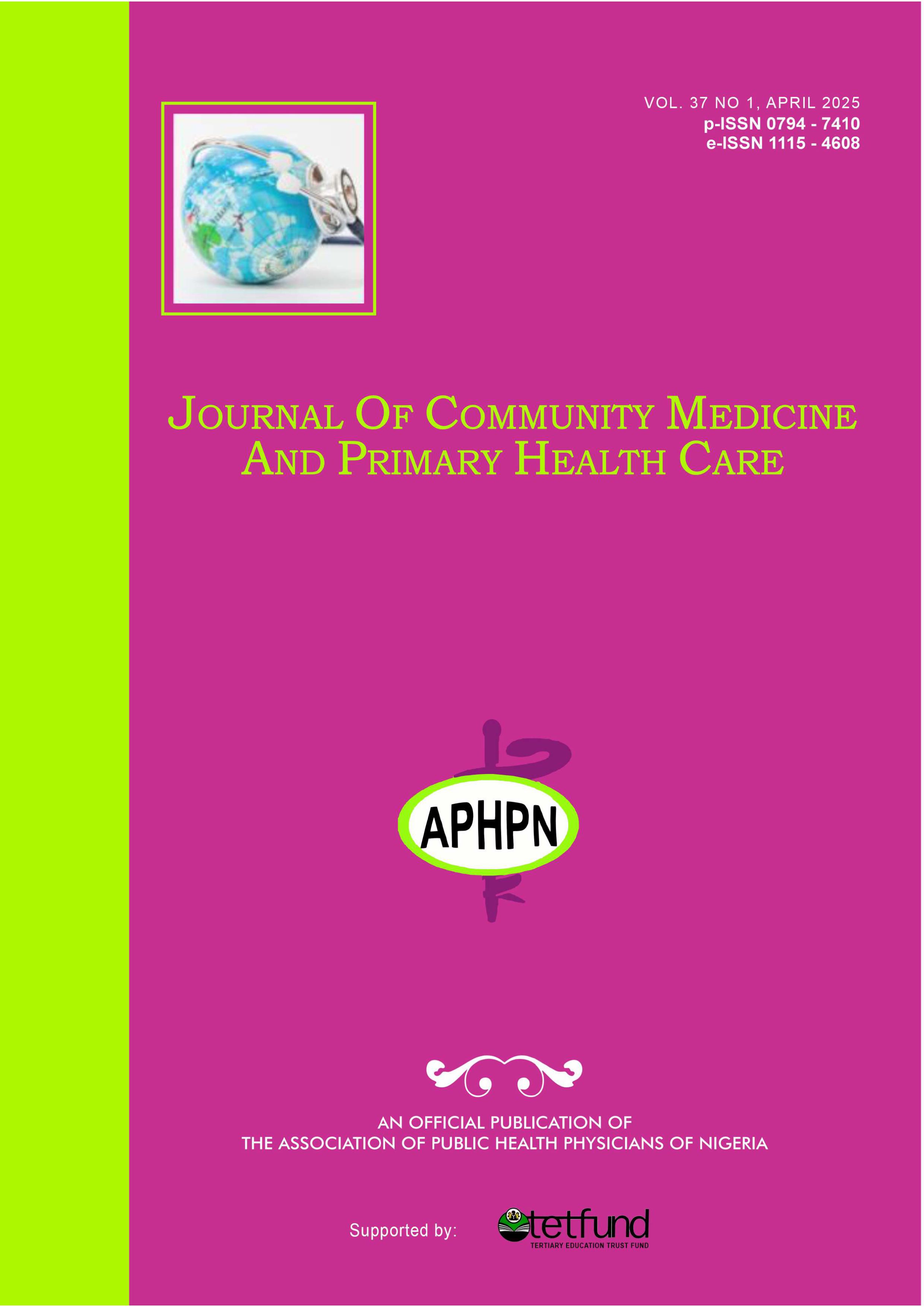A Rural-urban Comparative Assessment about Knowledge of Pregnancy Danger Signs by Women in a District of Ogun State
DOI:
https://doi.org/10.4314/jcmphc.v37i1.7Keywords:
Knowledge, Danger signs, Pregnancy, Women, Rural-urban, Ogun EastAbstract
Background: Danger signs in pregnancy are specific symptoms that signal serious complications requiring urgent medical attention to avert risks of maternal and foetal morbidity and mortality. This study compared knowledge of pregnancy danger signs among women in Ogun East Senatorial District.
Methods: This cross-sectional comparative study included 375 women from various communities, utilizing a multistage sampling method. An intervieweradministered, structured questionnaire was used for data collection and analysis using IBM SPSS version 22.0. Relevant descriptive and inferential statistics were calculated. The chi-square test was utilized to assess associations between categorical variables, while multivariate analysis identified factors independently associated with knowledge of these dangers signs. The significance level was set at a 95% confidence interval with a p-value ≤ 0.05.
Results: Urban respondents were older than rural respondents (mean age 31.07±6.115 and 30.69±6.312 years, respectively). Respondents identified at least three danger signs (rural 85.3%; urban 86.7%). Fever was the most known danger sign (rural 96.5%; urban 95.2%) while convulsions (rural 8.5%; urban 14.1%; p=0.016), dizziness (rural 24.0%; urban 17.3 %; p=0.024) and anaemia (rural 38.4%; urban 25.6%; p≤0.001) were the least known danger signs. ANC attendance (AOR=0.307, 95% CI: 0.129-0.730) and marital status (AOR=0.335, 95% CI: 0.142- 0.791) were significant predictors of knowledge of danger signs among urban and rural respondents, respectively.
Conclusion: Knowledge gaps regarding the danger signs of pregnancy indicate a need for tailored health education programs for pregnant women as well as a reinforcement of the importance of attending ANC.





